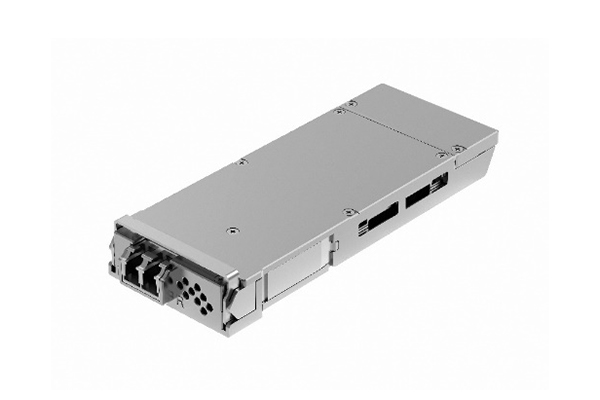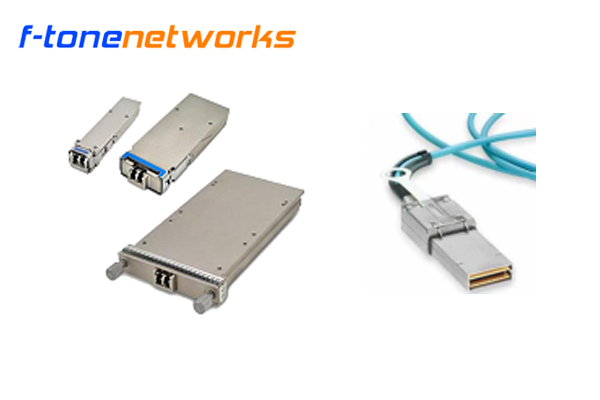
Description
The FTC2-HG-DCO module uses a 104-pin CFP2 MSA connector for all electrical interfaces with the host card, whereas the optical interfaces on the line side are provided through the optical receptacles on the CFP2. The module can be portioned into three functional parts: Tx path, Rx path and control & power block.
All control interface pins are routed to the MCU and oDSP. The MCU is also used for fast controls inside the module such as modulator bias adjustment, software image management, overall control coordination and status reporting.
Product Features
● Transmission reach beyond 1300 km/3000km over SMF for 200G/100G
● Hot-pluggable
● Support PM-16QAM (200G) and PM DQPSK/PM-QPSK (100G) modulation
● Supports SD-FEC
● Supports 100G/200G Flex-rate
● Supports OTU4/OTUC2/2 x 100GE/100GEsignaling
● Compliant with CEI-28G-MR specifications
● Compliant with OTL4.4/OTLC2/CAUI-4signaling
● Compliant with CFP2 MSA HardwareSpecification Rev. 1.0
● Compliant with OIF-CFP2-DCO-01.0
● Compliant with CFP MSA ManagementInterface Specification Version 2.6 (R06a)
● Power consumption: 26 W (200G)/21 W(100G)
Applications
● Edge DCI with extended Reach or with OLP protection
● IP Over Metro or Long Haul DWDM
Application
The module is designed to be used on the host board of system integrators to support transmission over DWDM links in Metro networks. As shown in Figure 2-1, it comprises high-data lanes, a single reference clock from hosts, a single 3.3 V power supply, an MDIO interface for module control and status report, and dedicated alarm and control pins.
Environmental Specifications
The table below defines the environmental specifications of the FTC2-HG-DCO module.
| Parameter | Min | Max | Unit | Condition |
| Environmental storage Temperature | –40 | 85 | °C | – |
| Environmental storage (relative) humidity | – | 85 | % | – |
| Environmental operating (relative) humidity | – | 85 | % | – |
| Operating temperature | 0 | 75 | °C | This temperature is monitored through an internal thermal sensor (MDIO register B02F). The temperature reading represents the module case temperature at the specified location. |
| Short term operating at high temperature | – | 80 | °C | The module operates up to a maximum temperature for short term (96 hours continuously, less than 15 days per year). This temperature is monitored through an internal thermal sensor (MDIO register B02F). The temperature reading represents the module case temperature at the specified location. |
Absolute Maximum Ratings
Operating or handling the module out of any specified absolute maximum rating is subject to permanent damage of the module.
| Parameter | Min | Max | Unit | Condition |
| Operating case temperature | –10 | 85 | °C | This temperature is monitored through an internal thermal sensor (MDIO register). The temperature reading represents the module case |
| temperature at the specified location. | ||||
| Power supply | –0.3 | 3.7 | V | – |
| Rx input power | – | 14 | dBm | Same modulation format; same wavelength as Rx local oscillator; continuous or peak power |
Electrical Characteristics
A single +3.3 V power supply shall be provided by the host card through the 104-pin connector and internal DC/DC power converters are used to regulate the power for different components inside the module. The +3.3 V power supply provided by the host shall adhere to the CFP2 MSA Hardware Specification version1.0 available at www.cfp-msa.org. The electrical ground is isolated from the module chassis ground.
The power supply requirements are specified in Table 8-1 below. Those power classes for which the maximum current per pin exceeds 1125 mA will require agreement from the electrical connector supplier.
| Parameter | Symbol | Min | Typ | Max | Unit | Note |
| 3.3 V DC supply voltage | P3V3 | 3.2 | 3.3 | 3.4 | V | Measured at the electrical connector |
| 3.3 V DC supply current | P3V3_Icc | – | – | 9 | A | The maximum current/pin shall not exceed 1.125 A |
| Power supply noise | P3V3_noise | – | – | 2 | %p-p | DC-500 MHz |
| Power supply ripple | P3V3_ripple | – | – | 1 | %p-p | DC-20 MHz |
| lnrush current | P3V3_Iir | – | – | 500 | mA/ μs | – |
| Turn-off current | P3V3_Ito | –500 | – | – | mA/ μs | – |
| Power consumption | Pwlp | – | – | 2 | W | Low power mode |
| Power consumption | Pwc4 | – | – | 26*1, *2 | W | 200G PM- 16QAM |
| – | – | 21*1, *2 | W | 100G PM-DQPSK/QPSK |
NOTE
*1 Power consumption depends on the actual application condition. For 200G PM-16QAM typical application, optical links should have enough OSNR margin with pre-BER better than 1.5e 2 and power consumption is less than 26 W (200G with framer enabled)/21 W ( 100G with framer enabled).
*2 With framer disabled, the power consumption will be reduced to 25 W for 200G or 20 W for 100G. The FTC2-HG-DCO module supports alarm, control, and monitoring functions over an MDIO bus.This interface consists of eight pins listed in the table below.
MDIO pins
| Signal | I/O | Logic | Description |
| MDC | I | 1.2 V LVCMOS | Management data clock, max. 4 MHz |
| MDIO | I/O | 1.2 V LVCMOS | Management data input output, max. 4 Mbps |
| PRTADR[2:0] | I | 1.2 V LVCMOS | Physical port address |
| GLB_ALRMN | O | 3.3 V LVCMOS | Global alarm, active low, indicating FAWS condition |
There are six control pins as listed in the following table to support real-time control via hardware pins.
Host-control pins
| Signal | I/O | Logic | Description |
| MOD_RSTN | I | 3.3 V LVCMOS | Module reset, active L, internal PD |
| TX_DIS | I | 3.3 V LVCMOS | Transmitter disable, active H, internal PU |
| MOD_LOPWR | I | 3.3 V LVCMOS | Module low power, active H, internal PU |
| PRG_CNTL[2:1] | I | 3.3 V LVCMOS | Programmable control [2:1], internal PU |
The PRG_CNTRL [2:1] signals have MSA defined default meanings that are listed in the CFP MSA implementation agreement. The lower two bits (hardware interlock) define the power class of the module and must be kept static during initialization. When MOD_LOPWR is active, the maximum power consumption is < 2 W and the host can still communicate with the module via the MDIO interface.
The MOD_RSTN signal is run to a reset chip to generate a reset to the internal MCU and oDSP ASIC (RST_N). There are five alarm pins from the module back to the host.
The transmitter and receiver comply with the CEI-28G-MR electrical specification. The data lines are AC-coupled and terminated in the module according to the following figure from the CFP2 MSA. The termination also applies to the reference clock, TX monitor clock, and RX monitor clock.
Transmitter electrical output characteristics
| Parameter | Symbol | Min | Typ | Max | Unit | Notes |
| Signaling rate per lane | TBaud | 25.78 | – | 28.3 | Gbps | CEI-28G-MR |
| Differential voltage pk- pk | TVdiff | 800 | – | 1200 | mVpp | – |
| Differential output Impedance | TRD | 80 | 100 | 120 | Ω | – |
| Common mode noise (RMS) | Vrms | / | / | / | mV | AC-coupled |
| Transition time | Trise/Tfall | – | TBD | – | ps | 20% to 80% |
| Common return loss | TSCC22 | – | – | –6 | dB | < 10 GHz |
| – | – | –4 | dB | 10 GHz~Baud Rate | ||
| Total j itter | – | – | – | 0.28 | UIpp | – |
Module-host alarm pins
| Signal | I/O | Logic | Description |
| RX_LOS | O | 3.3 V LVCMOS | Receiver loss of signal, active H |
| MOD_ABS | O | 3.3 V LVCMOS | Module absent, active H, internal PD |
| PRG_ALRM[2:1] | O | 3.3 V LVCMOS | Programmable alarm [2:1] |
All signals but MOD_ABS interface to the DSP ASIC. The PRG_ALRM [2:1] signals have MSA defined default meanings that are listed in the CFP2 implementation agreement.
Mechanical Specifications
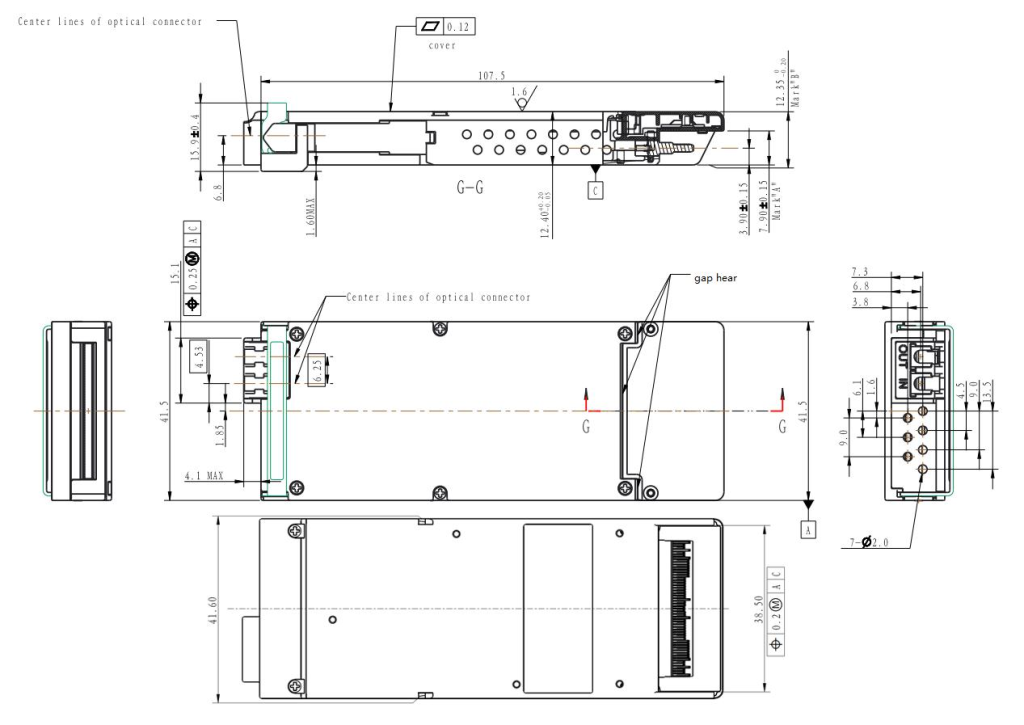
Ordering Information
| Part Number | Description |
| FTC2-HG-DCO | 200G/100G, PM-16QAM/PM-DQPSK/PM-QPSK, Coherent CFP2 |
北亿纤通 | F-tone Networks
企业邮箱: sales@f-tone.com
企业手机:19081343401
企业电话:028-85255257
企业传真:028-85977702
注:本产品有全国产化型号可选
本产品为CFP2光模块FT-WJ系列,仅展示部分参数,如有需要,请联系我们。
Important Notice
Performance figures, data and any illustrative material provided in this data sheet are typical and must be specifically confirmed in writing by F-tone Networks before they become applicable to any particular order or contract. In accordance with the F-tone Networks policy of continuous improvement specifications may change without notice.
The publication of information in this data sheet does not imply freedom from patent or other protective rights of F-tone Networks or others. Further details are available from any F-tone Networks sales representative.
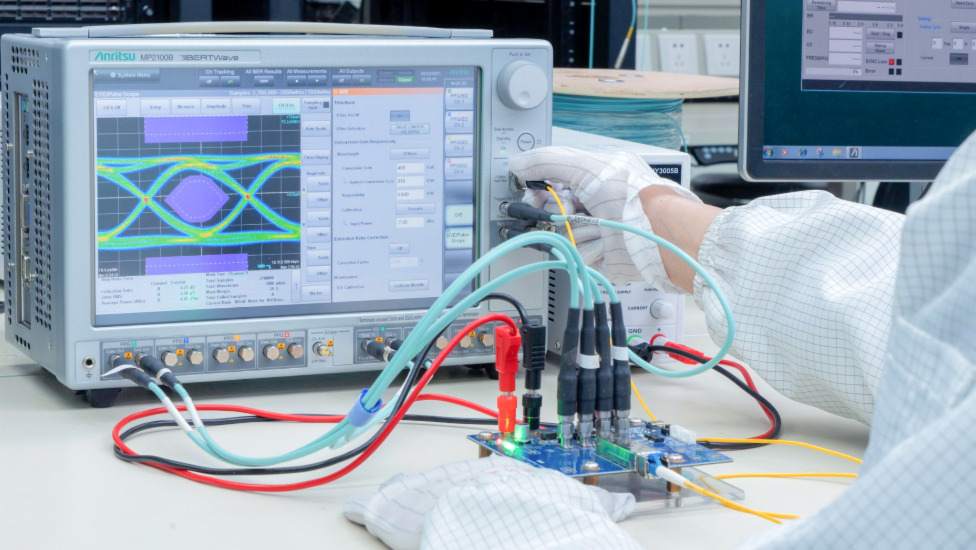
光学性能测试
测试光纤收发模块的眼图情况、接收灵敏度、消光比、波长、发光、光接收、电流和电压,以确保信号质量、传输的稳定性和可靠性。
Traffic Testing
测试误码率和丢包率,使其符合相应标准,确保收发器的性能。

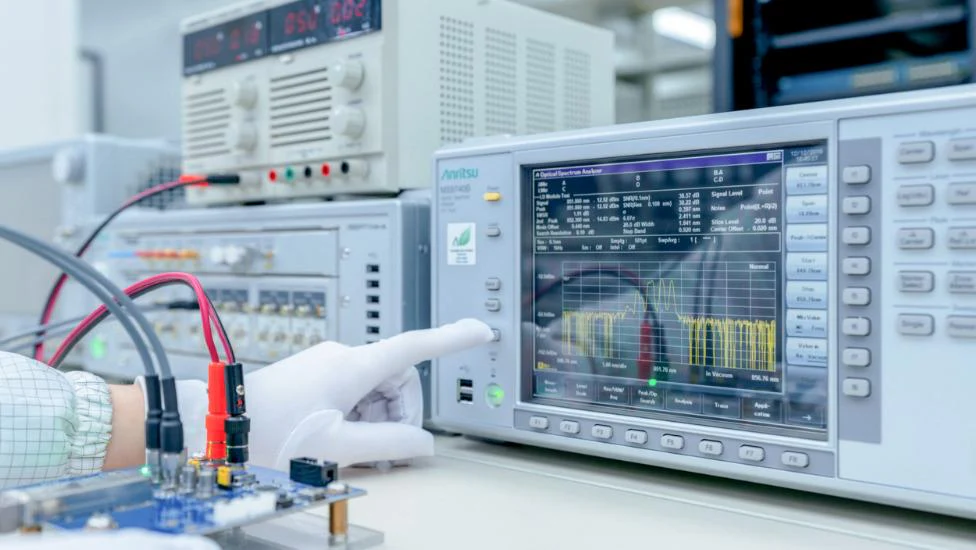
光学性能测试
测试光纤收发模块的眼图情况、接收灵敏度、消光比、波长、发光、光接收、电流和电压,以确保信号质量、传输的稳定性和可靠性。
端面测试
检查光纤收发模块的端面并保持清洁,以实现更稳定的数据传输、更好的性能和耐用性。


兼容品牌:
华为 | 华三 | 中兴 | 锐捷 | Cisco | Juniper | Arista | Brocade |HPE ProCurve | HPE Aruba | HPE BladeSystem | HPE H3C | H3C | Dell | Extreme | HW | Generic | F-tone | Intel | Netgear | IBM | NVIDIA/Mellanox (Ethernet) | Ciena | Fortinet | Avago | Avaya | Alcatel-Lucent | D-Link | F5 | Ubiquiti | Mikrotik |Broadcom…..


